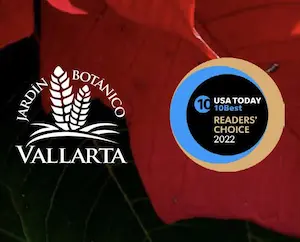Your cart is currently empty!
Gardening for Nature: Ecoregion Five
Photo:
Image by Walt Musekamp from Pixabay
Author: Julianne Labreche, Master Gardeners of Ottawa-Carleton; published with permission
“In the past, we have asked one thing of our gardens: that they be pretty. Now they have to support life, sequester carbon, feed pollinators, and manage water.”
– Douglas Tallamy
A fundamental change in thinking is happening among many Canadian gardeners. Gardening styles are shifting beyond beauty and towards biodiversity. That’s because helping to preserve biodiversity begins in our own backyards, according to Douglas Tallamy, the author of Nature’s Best Hope and Bringing Nature Home Dr. Douglas Tallamy is a professor and chair of the Department of Entomology and Wildlife Ecology at the University of Delaware in Newark, Delaware.
Despite his American roots, he is well known in Canada too, simply because North America’s natural spaces have no political boundaries. His hope is that each of us will be able to make a difference in preserving and protecting the plants and animals that share this land, simply by making clear choices about the kinds of plants we choose to grow ourselves.
What Are Keystone Plants?
Tallamy envisions a National Homeland Park that connects garden spaces across the continent. One garden can make a difference, but a multitude of gardens that connect and create wildlife corridors will bring about profound change. Indeed, he states, this is nature’s best hope in these modern-day times of climate change, habitat loss, and intensive corporate farming. He argues that approaches to preserving biodiversity are changing. His rationale goes beyond planting native versus non-native plants. His team’s research has revealed something even more striking, namely, that only a small percentage of plant species within any ecoregion support most of our butterfly and moth larvae, which, in turn, are critical for other wildlife, especially birds. “It’s not simply natives versus non-natives,” he says. “It’s the right natives versus everything else.”
Importance of Keystone Plants
These plants are called ‘keystone’ plants. He compares them to the architectural feature of a keystone found in the middle of a Roman arch. If that keystone is taken out, the arch collapses. It’s the same idea in nature. If these keystone plants are removed, nature’s food web will collapse. Keystone plants are essential because they feed most of the caterpillars that support nature’s food web.
“We found that just five percent of our native plant species are supporting 75% of the caterpillars out there, and 14% of our native plants are supporting 90% of the caterpillars,” he states.
In plain terms, it is as basic as this: If you enjoy chickadees—or any other wild bird species, for that matter—then plant a keystone plant to support them. Without these plants, they cannot rear their young, which need to be fed soft food, just like any babies, and therefore depend upon these fleshy insects to mature. Over time and without keystone plants, bird populations will shrink, just as many common bird species, including warblers, finches, and swallows, are disappearing right now from across the continent.
Types of Keystone Plants
Keystone plants are divided into two types, namely: host plants that feed the young caterpillars of approximately 90% of butterflies and moths (Lepidoptera), and secondly, plants that feed specialist bees. These are native bees that eat pollen only from specific plants. Keystone plants play an important role because they feed both specialist and generalist bees. Bees, of course, are important pollinators, both for many of the fruits and vegetables that we eat as well as for foods that support wildlife.
Keystone Plants by Ecoregions
North America is divided into vast ecoregions, each with different keystone plants that support native wildlife. Our area falls into the Northern Forest ecoregion, Ecoregion Five, an enormous swath of land that sweeps from the northern prairie region across Ontario and Quebec and into the Maritimes, including all of Newfoundland. Closer to home, in the Ottawa-Lanark areas, it is these keystone plants in this northern forest that homeowners are encouraged to plant.
Because these plants are suitable for our ecoregion, including its climate and soil, many are also well suited to privately owned land. Plant choices, of course, will depend on the size of your property as well as light and soil conditions. Large rural properties have space to support some of these tall keystone trees and shrubs. Smaller, urban-size properties are usually better suited to shrubs and perennials. There might be space for a small to medium sized keystone tree too, planted further away from a house on a smaller lot.
It is these keystone plants within the Northern Forest, Ecoregion Five, that our Master Gardeners will describe in related posts. Adair Heuchan writes about native keystone trees that grow in Ecoregion Five. Penka Matanska reviews shrubs in our ecoregion. Claire McCaughey explores some important native perennials.
Make a Difference with Keystone Plants
During times when we sometimes feel hopeless in preserving the vast beauty of our wilderness, including dwindling species of native plants and animals, there is something to be said for focusing our attention on our own backyards and growing more keystone plants with the hope of making a difference.
About the Author
Share with Family and Friends
Featured Authors
Visit a Botanical Garden For Unique Experiences.
Comments
Logging in to comment gives you more features, but it is not required.
Subscribe
0 Comments
Oldest













